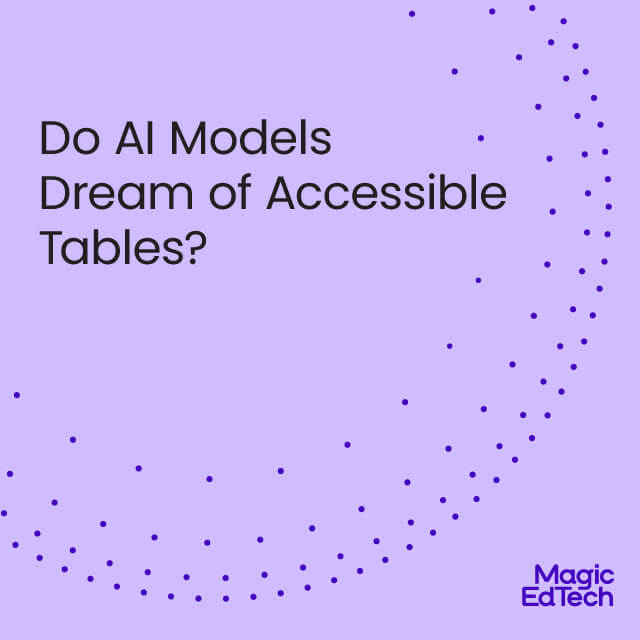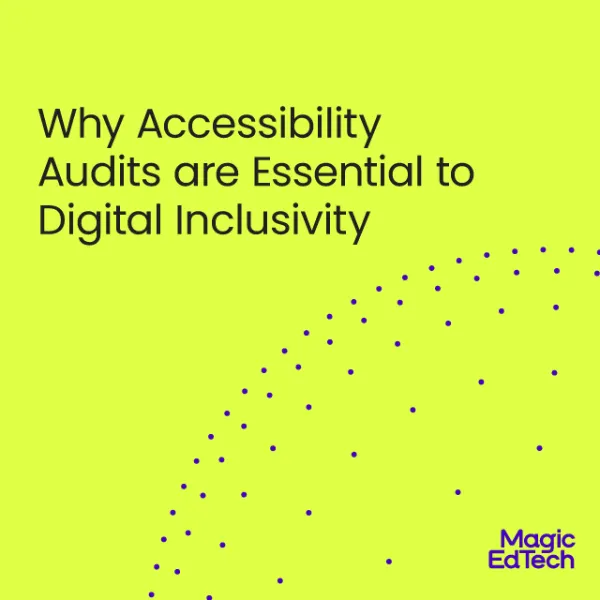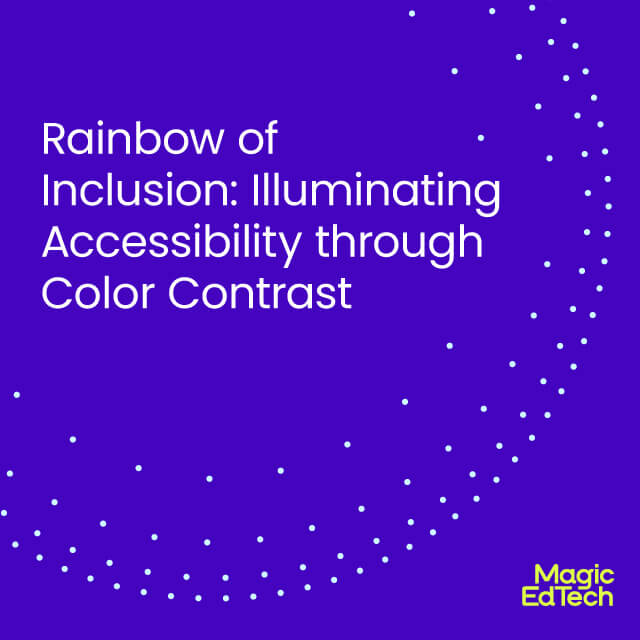The Synergy of AI and EPUBs for Inclusive Learning
- 22 December, 2023
- Reading Time: 5 mins
EPUBs have been around for a while now, making digital reading more accessible and exciting. These versatile and adaptable electronic publications have revolutionized the accessibility and portability of books and educational materials. Offering a versatile platform that supports various multimedia elements, EPUBs have made reading an interactive and enriched experience.
At its core, EPUB, short for Electronic Publication, are digital files designed to facilitate smooth and flexible reading experiences. They harness the power of technology to merge text, images, multimedia, and interactive elements into a cohesive and accessible format. By transcending the limitations of traditional print, EPUBs have opened new avenues for learning, enabling individuals to access a wealth of information conveniently, irrespective of geographical or physical boundaries.
But, the future of EPUB accessibility is gearing up for some major changes, and it’s all about integrating Artificial Intelligence (AI). This AI infusion promises significant enhancements that will have a real impact on assistive technologies, making reading even more inclusive for everyone.
The Evolution of EPUBs
Originally born as the Open Ebook Format in the ’90s, EPUBs have evolved over time through various iterations to the robust EPUB 3.3 standard we recognize today. With the merger of the International Digital Publishing Forum (IDPF) with the World Wide Web Consortium (W3C), the aim was to craft a standardized, universally accessible digital publishing format. This collaboration led to the development of EPUB 3, focusing on incorporating accessibility features as integral components, ensuring that EPUBs are designed with a priority on inclusivity.
EPUBs can be read on different devices like ADE, Kobo, Kindle, and more, making them super flexible. Beyond conventional text, EPUBs ingeniously integrate multimedia elements like images, audio, and video, elevating the reading experience by transforming static pages into interactive and immersive journeys. Their support for hyperlinks and cross-references further amplifies their utility, empowering readers to navigate through content effortlessly, and fostering deeper connections between different sections, references, or external resources. EPUBs, thus, transcend the constraints of traditional print, ushering in a new era of digital literature characterized by accessibility, interactivity, and portability.
EPUB Version 3.3
Accessibility has always been a key focus for EPUBs, and the recent release of EPUB 3.3 stands at the forefront of digital publication standards, prioritizing inclusivity through a robust set of accessibility features. This latest iteration integrates streamlined specifications, focused on tightening security, privacy, enhancing loading speeds, and introducing modern content types like WebP for images and OPUS for audio for good quality of content across various devices. Notably, EPUB 3.3 extensively focuses on semantics, metadata structuring, and navigation functionalities. These enhancements are instrumental in elevating the reading experience, especially for individuals reliant on assistive technologies. Augmented support for MathML for mathematical equations and SVG for scalable vector graphics enriches content, fostering an environment where diverse needs are met.
Reflowable vs Fixed-layout
ePUB3 offers two distinct publishing formats: reflowable and fixed layout. Reflowable layouts adapt content dynamically, adjusting text and pagination to suit the device’s screen size and orientation, making them ideal for text-heavy books like novels or narrative nonfiction. Readers can personalize their reading experience by customizing text size, font, and margins. On the other hand, fixed layout formats are suitable for image-centric publications like art books, maintaining the book’s appearance similar to its physical counterpart on the eReader’s screen. However, in fixed layouts, text and pagination remain static, requiring zooming for better visibility. While reflowable layouts offer flexibility, fixed layouts maintain visual integrity, crucial for books with numerous images where reflowing could distort the content’s layout.
The Role of AI in Advancing EPUB Accessibility
As technology continues to advance, the integration of AI in EPUB development presents a promising frontier in enhancing accessibility. AI-driven tools and algorithms hold the potential to revolutionize EPUBs by automating various accessibility features. Notably, AI facilitates the creation of automated alternative text for images, enabling visually impaired readers to comprehend visual content through descriptive text. Additionally, image-to-text conversions enable the extraction of text from images, thereby aiding users who rely on text-to-speech technologies for consumption. Moreover, AI contributes to the formatting of complex structures like tables, ensuring they are more accessible and comprehensible to readers using assistive technologies. The conversion of image-based tables into fully accessible HTML tables will overcome complexities in content presentation. There’s a prospect of AI comprehending and categorizing bulleted content and ordered and unordered lists, facilitating better organization within EPUBs. Moreover, AI’s capacity to ascertain the hierarchy structure of EPUB content holds promise for a more structured and navigable reading experience.
The incorporation of AI in EPUB development signifies a leap towards a more inclusive digital reading experience. By automating tasks that were previously manual, AI-driven enhancements streamline the creation of accessible content, promoting efficiency and consistency across publications. These advancements align with the fundamental ethos of accessibility, breaking down barriers to information and fostering an inclusive environment for diverse readers.
Envisioning this symbiotic relationship, AI is poised to play a pivotal role in transforming EPUBs by enhancing their adaptability to various user needs. AI algorithms hold promise in simplifying and optimizing complex content elements, making them more comprehensible for readers with different cognitive abilities or language proficiency levels. Through intelligent algorithms, AI can significantly contribute to improving readability and tailoring content presentation to match individual preferences and accessibility requirements.
From screen readers interpreting automated alt text to voice-based navigation systems, EPUBs equipped with AI-driven accessibility features empower users with disabilities to engage with digital content seamlessly. These innovations bridge gaps, enabling users with visual, auditory, or cognitive impairments to access information without hindrance, fostering an environment where everyone can partake in the joy of reading.
Conclusion
The transformative power of EPUBs, coupled with AI’s capabilities, heralds a future where digital content is not just accessible but also enriching for every individual. It’s more than just technology; it’s about empowering individuals, breaking down barriers, and enabling equitable access to information.
Looking ahead, it’s crucial to continue advancing EPUB accessibility. While AI has shown immense potential in enhancing EPUBs, further developments and refinements are essential to ensure seamless accessibility for all users. The journey towards creating truly inclusive digital environments relies on ongoing innovation and collaboration within the tech community.




